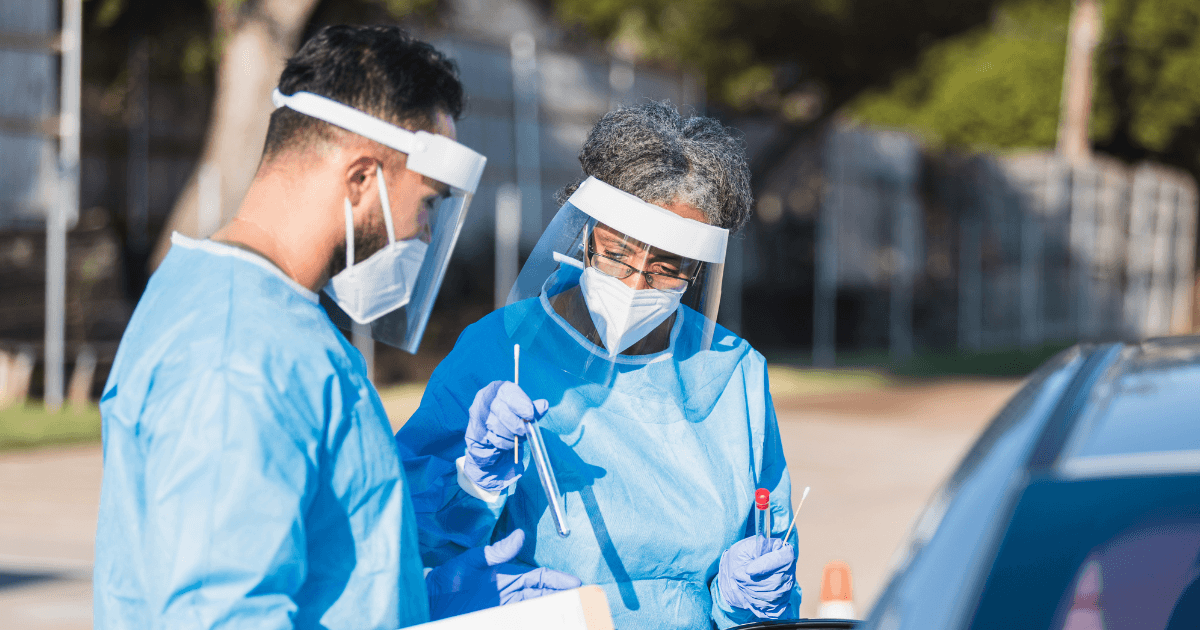Beat the heat this summer with health tips from Nurse Practitioner Ginger Bane

3 Minutes

Team Curative

Jul 28, 2023
This summer, record temperatures are being recorded across the United States — and in many parts of the world. July 4, 2023 was slated to be the hottest day ever recorded, but it was quickly replaced in subsequent days, ultimately becoming the hottest month on record. With back-to-back heat waves sweeping the country, many are left wondering how to best survive in extreme heat conditions. While many welcome warm weather days in the sun as a benefit to their mental health and immune system, in high temperatures, this therapeutic activity could be harmful if the right protective steps aren’t taken.
According to the National Weather Service, extreme heat is the number one weather-related cause of death. An excessive heat warning will be issued when the daytime heat index is 105 or higher during the day and 75 or higher at night for at least a 48-hour period. If heat index values reach 105 degrees or more, sun-stroke, heat cramps, or heat exhaustion are likely with prolonged exposure or physical activity.
To avoid the harmful effects of extreme heat — here’s what Curative Nurse Practitioner Ginger Bane recommends:
1. Hydrate
First, it’s important to drink plenty of water and limit alcohol consumption. Water is sufficient for summer hydration unless you spend a significant amount of time outdoors (> 1 hour) sweating, such as with exercise or yard work. Zero or low-calorie sports drinks can be used to replace salt and minerals that are lost during excessive sweating.
2. Protect your skin from the sun
Next, limiting prolonged sun exposure is vital on hot days. If you plan to be outside, wear loose moisture-wicking sun-protective clothing with UPF, sunglasses, and a hat. Also, be sure to wear sunscreen and reapply often, as sweat and water can cause your sunscreen to wear off quicker.
3. Wear loose, light-colored clothing
It’s also important to wear loose, moisture-wicking fabrics which help keep you cool. If you find yourself overheating, be sure to remove unnecessary clothing.
4. Know the signs of overheating.
Last but certainly not least - watch for signs of overheating. Heat exhaustion and heat stroke are more likely to occur in young children under age 4 and in people over age 65 and in those with certain medical conditions or on certain medications. Check in on those most vulnerable during these record-breaking heat waves.
If you or someone you know is experiencing any of the following, be sure to take these steps, seek medical advice from your doctor, visit urgent care or virtual urgent care, or, if necessary, call 911.
Symptoms of Heat Exhaustion:
Nausea
Weakness
Heavy Sweating
Cramps
Thirst
Dizziness
Act fast by sipping cool water, moving to a cooler area, applying a cool towel, and loosening clothing.
Symptoms of Heat Stroke:
Dizziness
Confusion
Headache
Lack of sweating
Loss of consciousness
Act fast and call 911. Move to a cooler area, provide cool water to sip if still conscious; apply a cool compress to the neck, and remove excess clothing.
Be sure to share these tips with family and friends to keep them safe from the heat this summer!
To learn more about how Curative’s health plan promotes preventive care, please see our employees page.
References
CNN. (2023, July 27). July on track to be the hottest month ever recorded, according to climate scientists. CNN. https://www.cnn.com/2023/07/27/world/july-hottest-month-record-climate/index.html
National Weather Service. (n.d.). Heat Illness – Heat Safety. Retrieved from https://www.weather.gov/safety/heat-illness
National Weather Service Milwaukee/Sullivan, Wisconsin. (n.d.). Heat Waves. Retrieved from https://www.weather.gov/mkx/heatwaves
Weather & Radar. (n.d.). July 4 Was Earth's Hottest Day on Record, According to New Data. Retrieved from https://www.weatherandradar.com/weather-news/july-4-was-earths-hottest-day-on-record-according-to-new-data--6367a7dd-70fe-4f16-928e-0084852b6b3a
NPR. (2023, July 15). What's Driving the Record-Breaking Heat Wave Hitting the U.S.? Retrieved from https://www.npr.org/2023/07/15/1187978005/whats-driving-the-record-breaking-heat-wave-hitting-the-u-s
Sign up for our Newsletter
Índice de Contenidos
1. Hydrate
2. Protect your skin from the sun
3. Wear loose, light-colored clothing
4. Know the signs of overheating.








